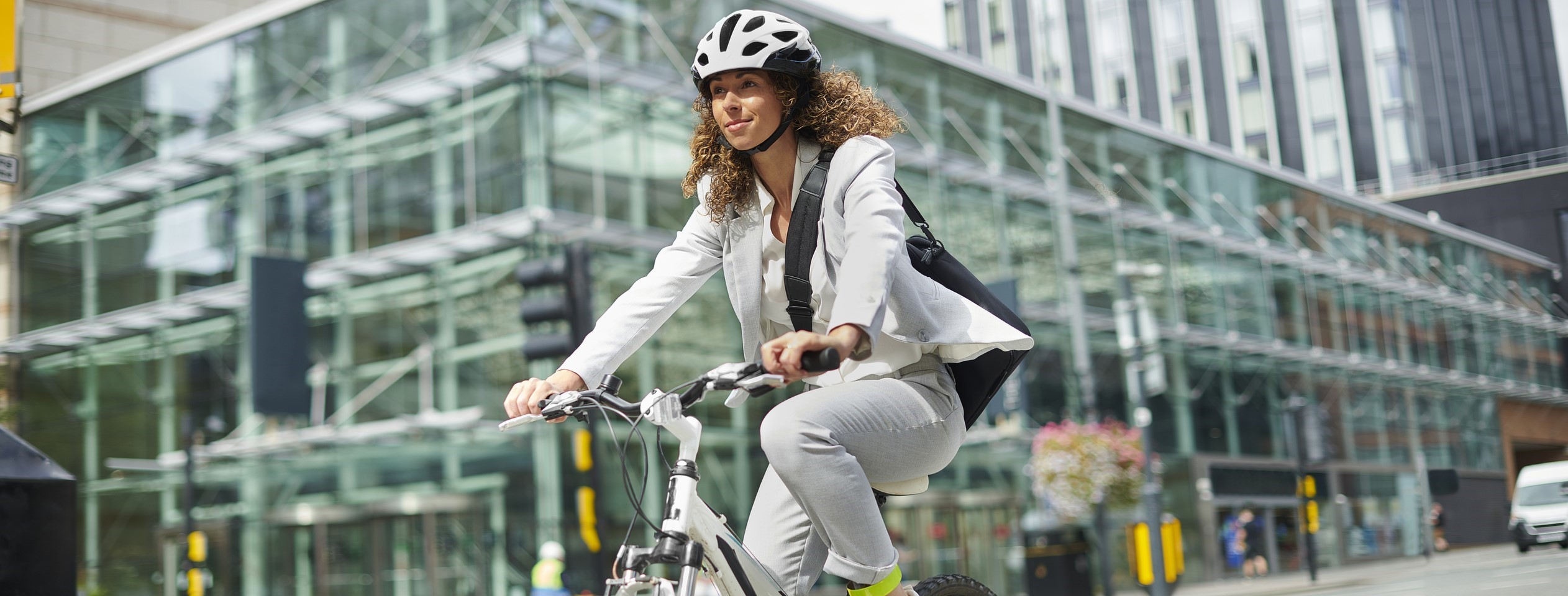
Clean transportation
- Connect people to places through a safe, equitable, and sustainable transportation system.
- Maintain and improve multimodal transportation connections to reduce emissions, connect communities, and encourage active transportation and public transit use.
Goal 1: Plan a transportation network that supports sustainable transportation
- Track current state and federal funding opportunities and collaborate with the Metropolitan Council (Met Council) to direct more resources towards non-motorized transportation and public transit to support improved pedestrian, bicycle, and public transit facilities that are accessible, safe and desirable to people of all ages, abilities and skill levels.
- Use community input and data to understand evolving transportation needs of underserved and climate vulnerable communities, apply findings to transportation plans.
- Prioritize new or reconstructed multi-modal transportation projects that close infrastructure gaps, such as sidewalks, bike trails, and bus stations for people walking, bicycling, rolling, and taking transit. Ensure these projects improve equitable access to infrastructure, safety, and roadway function.
- Promote multi-modal transportation options, including pedestrian, bicycle, and public transit, in county plans and projects.
- Review and advocate for current and future MnDOT and Met Council transportation plans to prioritize new or reconstructed multi-modal transportation projects that: include facilities for people walking, bicycling, rolling, and taking transit, and increase frequency and quality of electrically powered transit service.
- Use the Equitable Development Framework to encourage developers, employers, and communities to adopt practices and policies that equitably expand spaces for people to walk, bike and roll.
Goal 2: Make it equitable and easier for all ages and abilities to use the multi-modal transportation network.
- Improve access to and accessibility of non-motorized vehicle infrastructure and support Met Council and Metro Transit in providing free or reduced cost transit.
- Advocate for safety-related improvements on public transit, such as cleanliness, on-time performance and expanded routes. Connect riders to community security contacts and social service providers.
- Provide educational opportunities for residents on how to safely use and access public transit and multi-modal networks.
- Deploy projects that temporarily demonstrate improvements for people walking and biking to assess opportunities for permanent improvements.
- Research options for an affordable, county-wide bike share program, accessible to everyone, including people who do not have banks.
- Encourage local governments to implement transportation demand management policies.
Goal 3: Reduce transportation-related greenhouse gas emissions within the county
- Offer telecommuting as an emissions reduction strategy through increased flexibility in telework and hybrid work schedules for county staff, particularly on poor air quality and extreme weather days.
- Coordinate with partners to manage stormwater and support transportation infrastructure resilience to extreme weather.
- Share information about grant funding to support EV purchase and charging station installation with residents and local governments.
- Encourage clean vehicle targets for city government and private sector fleet.
- Accelerate the retirement and replacement of inefficient county vehicles as possible.
- Advocate for state and federal standards that prioritize the reuse of materials throughout construction processes to minimize carbon footprint of transportation construction projects.
- Research options for a county-wide, affordable, electric vehicle car rental/share system.
- Equip county-owned facilities with safe and accessible bike facilities, where possible, based on facility use.
- Support state-level actions that increase electric vehicle charging infrastructure, increase electric vehicle access and availability, and educate communities about financial support available to purchase electric vehicles.
- Establish clean vehicle provisions for county procurement contracts.
Cross-plan connections
![]()
Connections to climate-smart natural land: Pedestrians, bikers and people using similar transportation rely on the tree canopy for comfort during extreme heat.
Connections to thriving communities: Transportation networks connect underrecognized and vulnerable residents with critical resources.
Connections to clean energy and efficient buildings: Energy sources for transportation impact county wide greenhouse gas emissions.
Connections to healthy lives: Clean transportation could reduce air pollution which affects cardiovascular, respiratory, and mental health.
Connections to clean economy: The clean transportation industry will increase job and business opportunities for people who operate, maintain, and repair electric vehicles.